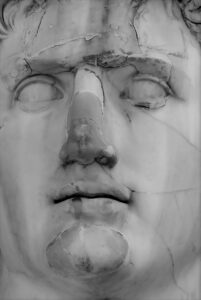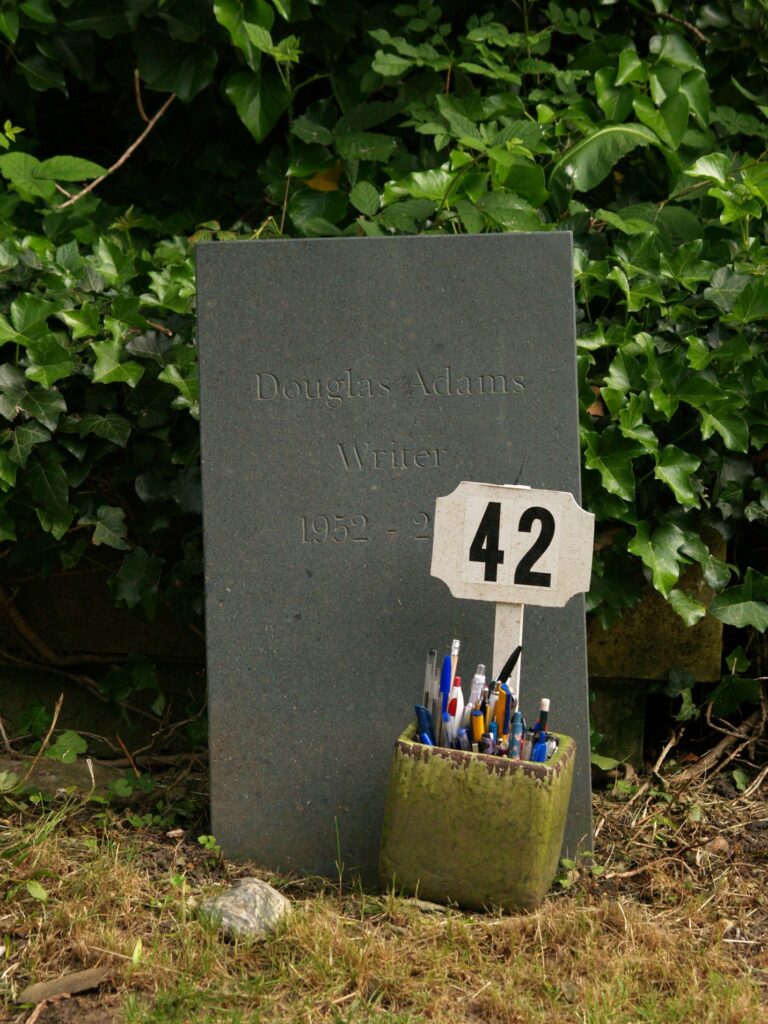For thousands of years, storytellers and audience members have fascinated themselves with the notion of character flaws. From Aristotle’s Hamartia (fatal flaw) to Brandon Sanderson’s discussion of flaws versus handicaps, this topic has received widespread attention and remains one of the best ways to write a compelling character.
But how do you write character flaws? How do you balance positive traits, negative traits, and character personality? What should you know about the overall conversation surrounding this topic?
We’ll answer these questions and more in this guide to all things character flaws!
Why Use Character Flaws At All?

If you were sculpting a beautiful bowl would you purposefully add a crack in it? Probably not, unless you want your cereal milk leaking all over your pants. So why would you make a character with a flaw? You have the godly opportunity to create the perfect person. Someone who could do anything, know anything, and achieve anything.
Someone like Superman, right?
Well, even he has a character flaw. Superman, as perfect has he may appear or act, has the flaw of kryptonite.
You could argue that this is a weakness rather than a flaw, but the principle here is that because Superman has something that holds him back he becomes more interesting. Character flaws work in a similar way.
Most places will tell you that you should add character flaws to your characters because doing so will add a layer of realism to your work, and while that certainly is the case, we argue that the main reason (no matter how reductive it may seem) is to generate reader interest.
The potential for character flaws to intrigue the reader is almost unlimited. As we’ll explore later, character flaws can tie into the plot and set up fantastic character arcs. Similarly, as discussed in this article on villainous protagonists, having imperfect characters makes them dynamic and engaging.
Realism in and of itself is not a strong enough reason to do anything, but the idea behind realistic characters and character flaws is that writing in such a way can let your characters really be human, even if they’re elves or dragons, because to be human is to be flawed.
When your characters get at the heart of humanity, something will resonate with your readers and an emotional investment will form. If thinking about realism and character flaws in that way helps, then certainly do so. Art’s ultimate purpose is to take part in and share the human experience. By creating flawed characters, you have the power of changin’ hearts and makin’ art(s).
Back to the Basics

In order to understand character flaws, it’s important to understand what Aristotle said on the matter. That ancient thinker wrote a critique on theater in 335 BCE called Poetics. This influential work challenged Socrates’ ideas that theater and drama were harmful to humanity.
Aristotle argued instead that stories have the power to purify us through cathartic moments and teach us through characters on stage. In this sprawling work Aristotle also coined the term “hamartia,” or fatal flaw in English.
Hamartia is an interesting concept that some argue can only apply to tragic heroes. The fatal flaw boils down to a flaw, error, or action that leads a character to their downfall. Beyond a simple character trait or personality, fatal flaws must destroy the character.
Scholars have long debated if hamartia should even be translated to “flaw” given that it needn’t be an issue with the character’s personality, it could be an action or a lack of knowledge. For our purposes, having the flaw remain an actual flaw will typically produce better stories and characters.
Aristotle references Oedipus Rex often in his Poetics piece. This constant inclusion of the tragedy has led many scholars to maintain that this play is the prime example of Greek tragedy. Given Aristotle’s notion of hamartia, Oedipus should present us with an excellent example of a fatal flaw.
Critics of the play have proposed multiple theories as to what Oedipus’ fatal flaw might be. Some argue that it was his hubris (god-defying pride) that led his mother to suicide and his self-mutilation. Others argue that it was his proclivity towards violent anger, like when he killed his father.
The fact that there’s no definitive answer shows the play’s excellent use of subtext. Having your character’s flaws be hidden enough to elude specificity but present enough to be noticed is the ideal way to write your characters.
Doing so will flesh out your characters more, make them more relatable to the reader, and hopefully establish them as worthy of multiple reads.
We bring this up not to say that you should write tragedies (but definitely do that if you want to!). We mention tragic flaws because it shows that character flaws have had a lasting impact on storytelling and can help you understand the importance flaws can play in your own stories.
Hamartia and Oedipus also reveal the connection between character flaws and plot. But we’ll get into that later.

Our 84-page book planner and 111 day writing course.
Flaws vs. Personality

Many writers wonder how they can balance writing characters with flaws while establishing their personalities. Where does the flaw end and the personality begin?
The simple answer is that there can be almost no difference between a flaw and a personality trait.
Remember that Oedipus’ fatal flaw could have been his proclivity to anger. Have you ever written or read a character who gets angry easily? That’s both a flaw and a personality trait.
The relationship between flaws and personality is kind of like the relation between a square and a rectangle. A square is a rectangle, but not all rectangles are squares. Similarly, a flaw is a personality trait, but not all personality traits are flaws.
Let’s say your character really likes ice cream. That’s part of their personality, but it’s definitely not a flaw (otherwise I’m an immensely flawed individual).
Now, let’s say that your character is obsessed with ice cream to the point that they can only think and talk about ice cream. While they’re at school they can’t listen to the teacher or focus on the material because their mind is screaming for ice cream. You could easily argue that this obsession is a flaw. BUT, even though it’s a flaw it’s still part of their personality.
Figuring out the right balance though can be extremely important. You don’t want your character’s flaw to be their whole personality. That’s how you quickly make a one dimensional, archetypical character.
The simple remedy to this problem is to have round characters. They should have multiple flaws, whether minor flaws or major ones, which will add multiple dimensions to them. There’s no set ratio for how many good character traits to include compared to bad ones, but be sure to have plenty of both.
If you have difficulty with personality creation, figuring out the flaws can definitely help with that. Come up with a flaw you would like to attribute to your fictional person (devious, I know).
Now consider how that flaw would affect them in certain situations. For example, let’s say you want your character to have a deep fear of the dark. As a child, how did that affect the way they played games with other kids? Did they tease or coddle your character? Did your character become jaded and defensive or learn to overcome the fear?
Basically you want to figure out how your characters dealt and deal with their flaws. Doing so will help you establish the way they think. Then you should be able to sprinkle in more positive personality details as you go on.
With the previous example, maybe your character learned to cope with their fear of the dark by imagining a cosmic whale or something, and since then has always had a certain affinity towards sea and space creatures.
After all, a lot of our own personalities come from the ways we deal with our own flaws. Why wouldn’t imaginary characters be the same way?
Plot and Flaws

As we’ve seen from Greek Tragedy’s relation to fatal flaws, a character’s flaw can (and often should) lead to major plot points and directly affect the story.
As we discuss in this article about inciting incidents, the hero’s journey (which many, many stories subconsciously follow) should take the character from the known world into the unknown world.
Now, how do we relate this to character flaws?
By showing the known world and the transition into the unknown world, you could easily show what the character you’re writing struggles with. When those struggles and flaws are defined, you can have something about the character that causes trouble in the new world.
An example of this would be Arthur from Douglas Adams’ Hitchhiker’s Guide to the Galaxy. What we see of Arthur is that he is a very normal person, but that he’s potentially very stubborn and set in his ways. This is a character flaw, given that he needs flexibility in the wacky universe.
When Arthur leaves the planet, he causes issues for himself and those around him by not accepting that things change. He’s constantly thinking back to his house (that would have been destroyed anyway) and can be abrasive at times because of that.
While so much of Douglas Adams’ “world” (his constructed universe) happens to his characters, certainly some of the flaws from the characters drive the story. This flaw-driven plot is most easily recognized with Zaphod Beeblebrox.
His rambunctious personality definitely demands the reader’s attention, but so much of his storyline (and those with whom he associates) and plot comes from his many flaws. He’s selfish beyond belief and uses people for his own goals. Because he so often does these things, characters are forced to react to him which ultimately forms the plot.
Basing your plot around the flaws and actions of your characters constructs a character-driven story and will mean more to your readers.
Flaws and Character Arcs

A large part of people’s enjoyment in reading comes from character arcs. Characters engage our interests and we follow them because we expect some sort of change.
Satisfaction of character arcs comes from changes the reader experiences in the character based on events of the story. Writing character flaws into your characters is essential to accomplish this task and excite your reader about the story.
Character arcs can be made in many ways, but when considering character flaws, there are two main ways to write them.
The first way to write a character arc with a flaw in mind is to have the character overcome that flaw, or at least deal with it in an empowering way. The second is to have the character lean into their flaws and become more monstrous and possibly experience a downfall.
In The Lord of the Rings, Frodo Baggins’ character arc has characteristics of both positive and negative changes.
The young hobbit has a flaw that most of the Shire shares. He is overly content with his life and doesn’t seek self improvement or adventure. He definitely also has his own personal flaws, but the novel mainly focuses on this aspect of his character in setting forth his arc.
Frodo’s positive arc follows his transition from a contented hobbit into one who has experienced the wider world and won’t settle back down in Hobbiton. He overcame his flaw and became a better person (…hobbit) because of it.
He learned so much more outside of the Shire than he could have imagined from within his cozy hobbit hole. His flaw established the grounds of his character arc. Lots of character arcs follow this model of firmly displaying someone’s faults and depicting the subsequent overcoming of these faults.
The Ring of Power presented Frodo with the opportunity to develop more flaws and lean further into his tendencies. The Ring corrupted Frodo’s personality and slowly introduced more flaws. He became more paranoid, more selfish, and less present.
So began his negative character arc by slowly accreting these negative personality traits. He eventually sank deeper into these traits, going so far as to avoid accomplishing the fellowship’s goal.
This negative arc is derived from external forces, but even that is a valid way to create the character’s flaw.
Conclusion

Clearly, flaws, despite their name, are the perfect way to augment your story and your characters.
By giving your characters flaws, you unlock your story’s potential for impressive plots and character arcs. Remember, a good way to give your characters personality is by deciding what their flaws are and then building the character around that.
Once you have your character fleshed out in this way, you can use their flaws and your other characters’ flaws to build your plot. By figuring out how everyone interacts with and reacts to each other will help create a character-driven story.
Finally, when you decide your character’s flaws, you can build the arc by deciding if they will overcome their flaws in a positive arc, or if they will lean into or develop their flaws in a negative arc.
Outlining your story by considering flaws can be an excellent way to keep your readers invested in your characters and plots. Your characters will be rounded, multi-dimensional beings that are ripe for arcs. Your plot will seem organic with your characters playing off each other’s flaws and actions.
Remember, flawed stories are the best stories! For more tips and tricks to writing excellent stories, stick with us here at Habit Writing.
gavinwride
Gavin is a fantasy author, short story enthusiast, and nature lover. When he’s not reading, writing, or exploring the outdoors, he is likely playing games. His board game collection is probably too big for someone living in a small apartment, and he has enough yet-to-be-played video games to fill a lifetime. His favorite book is "The Name of the Wind". His favorite author is Edward Abbey. His favorite game is "Dark Souls III", and he’d be more than happy to spend the day talking about lore, bosses, and game mechanics.
Our 84-page book planner and 111 day writing course.
